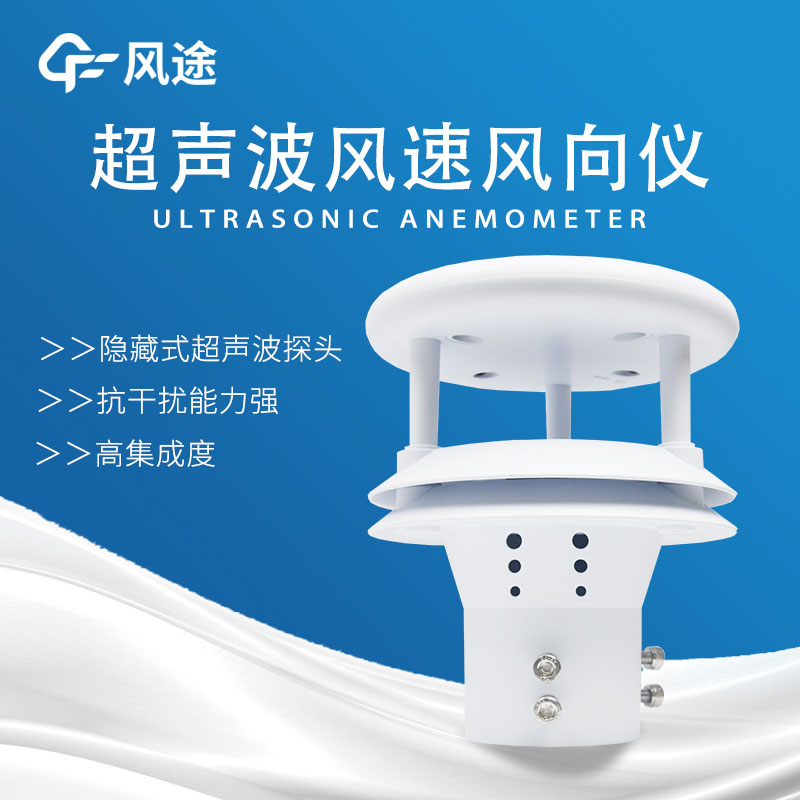Shandong Fengtu IOT Technology Co., Ltd
Sales Manager:Ms. Emily Wang
Cel,Whatsapp,Wechat:+86 15898932201
Email:info@fengtutec.com
Add:No. 155 Optoelectronic Industry Accelerator, Gaoxin District, Weifang, Shandong, China

Sales Manager:Ms. Emily Wang
Cel,Whatsapp,Wechat:+86 15898932201
Email:info@fengtutec.com
Add:No. 155 Optoelectronic Industry Accelerator, Gaoxin District, Weifang, Shandong, China
time:2023-10-12 17:32:04 source:Weather Station viewed:606 time
A wind speed meteorometer is a meteorological instrument used to measure wind speed. It is one of the very important devices in meteorological observation and prediction for monitoring and recording the speed and direction of wind in the atmosphere. Anemometers can use different operating principles and technologies, and common types include cup anemometers, ultrasonic anemometers, and so on.
A common type of wind speed weather meter is the cup anemometer, which consists of a horizontally placed shaft and three cup-shaped blades attached to the shaft. When the wind blows through the instrument, the wind force acts on the cups, causing them to rotate. By measuring the speed of rotation, the wind speed can be calculated. Cup anemometers can be widely used in weather observatories, wind farms, construction sites and other places.
The main functions of the anemometer are as follows:
1. Provide wind speed and direction data: wind speed weather meters can measure the wind speed, and some advanced models can also provide wind direction information. These data are essential for weather forecasting, meteorological research, engineering design, aviation and navigation, forestry and agriculture.
2. Supporting weather forecasting and weather warning: Wind is an important part of the meteorological system, and accurate measurement of wind speed and direction is essential for weather forecasting and weather disaster warning. The wind speed weather meter provides real-time wind speed and direction data, providing important reference information for meteorologists and forecasters.
3. For wind farms: In wind farms, understanding the speed and direction of the wind is critical to the operation and efficiency of wind turbines. Wind speed meteorometers help wind farm operators to monitor wind resources, determine the optimal location for wind turbine deployment, and provide output forecasts and O&M support.
4. Support engineering design: Understanding wind speed and pressure is necessary in the engineering design of buildings, bridges, and towering structures. The wind speed weather meter provides wind speed data, which can help engineers assess the wind load of the structure to ensure its safety and stability.
To summarize, a wind speed meteorometer is a meteorological instrument used to measure wind speed, which provides important wind speed and direction data to support weather forecasting, wind power generation, engineering design, and other fields. In meteorological observation and engineering applications, wind speed meteorometers play a key role in providing the ability to assess and utilize wind resources, as well as to monitor and warn of wind-related environmental conditions.

rainfall measuring measures mainly collect the water that falls on them and record changes in the depth of rainfall over time, usually expressed in millimeters....
What kind of equipment is tailwater monitoring equipment? It is a class of hydrological monitoring system that collects, organizes and analyzes various information in a water body. It has several characteristics as follows.1. it can automatically complete the whole process from the collection of raw...
what instrument measures wind direction used to measure wind direction is called an anemometer and records wind speed, direction, and gust strength....
In agricultural production, the study of soil moisture is of crucial importance. Appropriate soil moisture is one of the key factors for the healthy growth of crops. However, the traditional method for studying soil moisture - conducting on-site measurements regularly - has many drawbacks.Conducting...